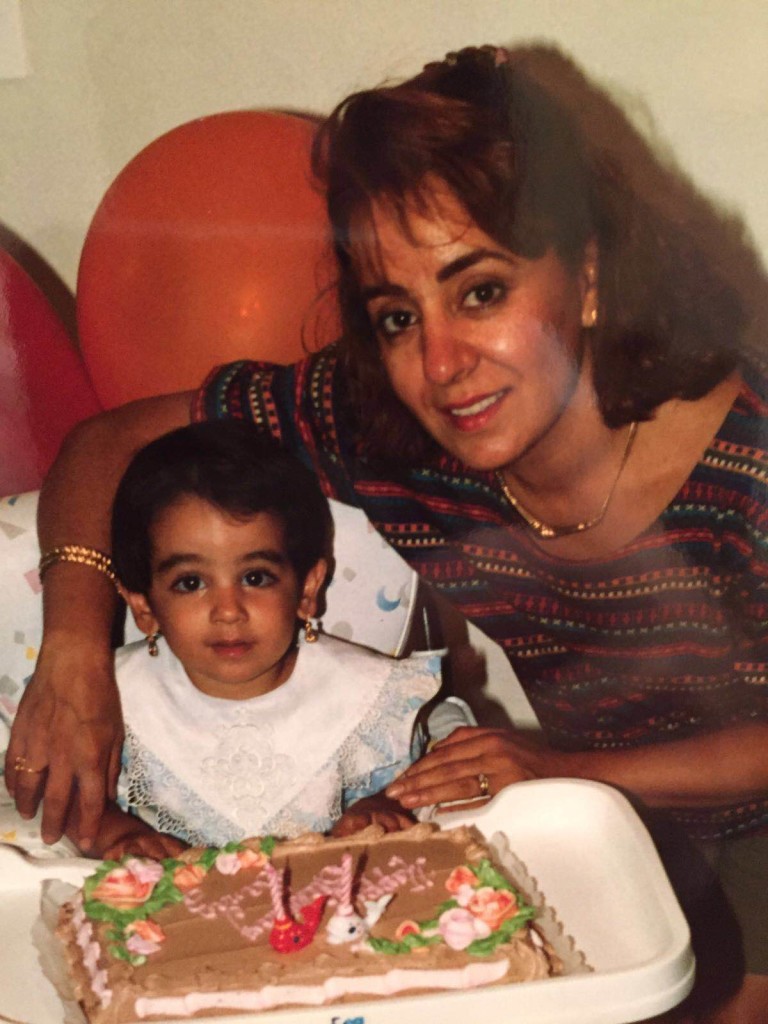When I was growing up, eating dinner was a chore. I’m not sure why, but sitting down to dinner, or any meal besides breakfast, meant an arduous back and forth between my mother, trying to feed me, and me, refusing to eat.

Looking back now, I cringe at the silent argument between my mother and me during those years. She spent countless hours in our kitchen, crushing saffron to make her Persian rice polow blush just right, and chopping herbs she would blend into simmering pots of khoresht, a kind of stew. But back then, I wanted none of it.
When my parents traveled to the U.S. to attend university in 1979, just before the Iranian Revolution, they did not expect to stay, or to eventually raise their children in what they then still considered a foreign country. The revolution and the hostage crisis changed everything. My parents made a deliberate effort to raise my younger sister and me, both born in California, with cultural appreciation. My first language was Farsi, and our family spent several summers visiting relatives in Tehran and Esfahan.
Despite all of this, I preferred to think of myself as American, back then. Intrigued by the concept of trimmed crust, I preferred the exotic Wonder Bread and bologna sandwiches I saw my American friends bring to school for lunch over my mother’s home-cooked fessenjoon or ghorme sabzi, two dishes that I would kill for these days. No matter how I tried, pomegranate walnut sauce and Persian herb stew just made no sense to my immature appetite. At the time, I wondered why my mother insisted we eat food that appeared so strange and unattractive compared with what I saw outside our home.
Instead of resenting or even acknowledging the unappreciative child that I was, with endless patience, my mother concocted a plan she knew would work when I, sick with a cold, refused her aash reshteh, a thick noodle and herb soup. Knowing that I could not refuse a good story, my mother came up with one to go along with the soup, figuring by the end I would be so enchanted that I would have to have a bowl for myself.
That was how I grew not only to love the story of Khaleh Bahar, or Aunt Spring, but also aash reshteh, which became the first dish I mastered (which I say with confidence only because my father reacted to it with, “Don’t tell your mother that it is better than hers.”) when learning to cook for myself in college. My love for cooking and sharing Persian food has sustained my connection to Iranian roots – one of the many ways that my mother’s love shows me how therapeutic cooking and food can be.
Many Iranians top their ash with a mixture of fried onions and kashk, or whey, but I like it better with plain yogurt, or with mast o musir, a kind of yogurt cheese with shallots. The small child inside me likes to imagine this was how Khaleh Bahar also took her bowl of healing ash on that cold day.
I no longer have any issues with Persian cuisine, but from time to time, I’ll still ask my mother to recite, in her soothing Farsi, this story – the only one that once got me to eat.
The story of Khaleh Bahar and the Coming of Spring
(Translated from Farsi)
The Crow was disappointed looking over the coat of frost and snow that still covered the river and leaves in the forest. The calendar was well into the spring months, but Khaleh Bahar, or Aunt Spring, had not yet come. The Crow decided to speak to his friend, the Apple Tree, to see what had happened.
“Haven’t you heard?” asked Apple Tree, “Khaleh Bahar is not feeling well. She could use some soup.”
So the Apple Tree asked the Crow to gather the freshest ingredients – parsley, cilantro, spinach, and other herbs, along with chickpeas, lentils, and kidney beans – so that she could cook Khaleh Bahar ash reshteh that would bring her back to health and bring springtime to the forest. (When my mother tells this story today, she likes to add in her accented English that this was necessary “because Apple Tree is like a stationary bike,” and could not go grocery shopping herself).
The Crow was happy to help. He picked out all of the sabzi, and brought it along with the beans to the forest critters who were helping Apple Tree cook ash for Khaleh Bahar. When Apple Tree had finished, she bundled the soup in Crow’s beak so that he could deliver it to Khaleh Bahar at her home.
When Crow arrived there, he entered through the window, and found Khaleh Bahar laying in bed, sick.
“Thank you for bringing this lovely soup!” Khaleh Bahar said to Crow, “Tell the Apple Tree that I will feel better in no time, and will make the forest bloom.”
And sure enough, in only two days the Apple Tree began to blossom with fruit and flowers (not entirely sure if apple trees actually blossom with flowers outside of this story?), as did the rest of the forest.

Your Comments